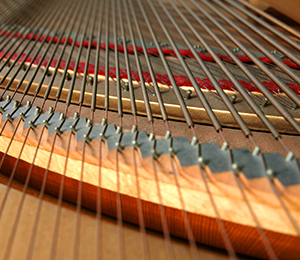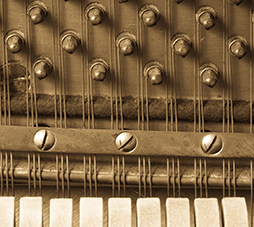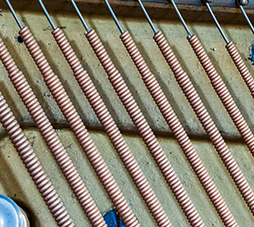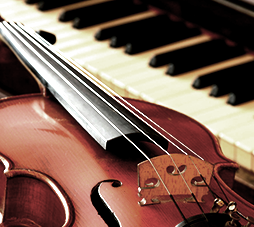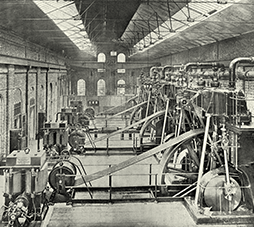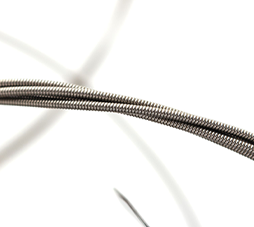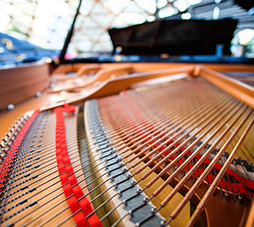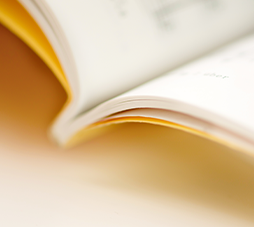Music WireHistory of unison strings
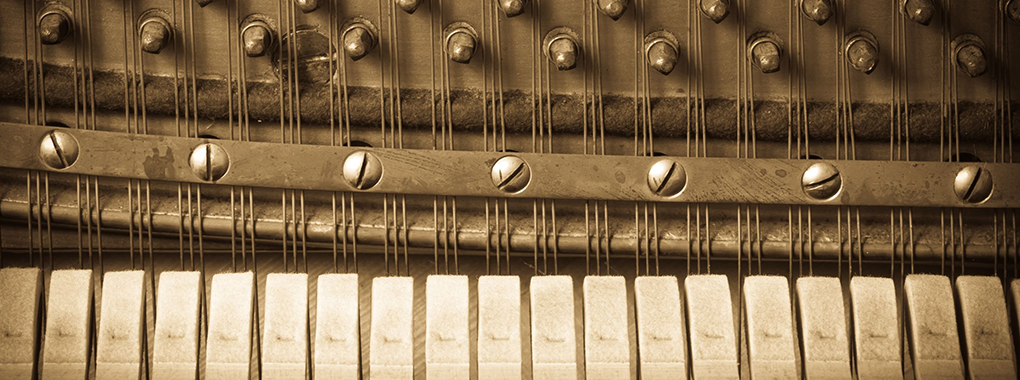
History of unison strings
We've already noted that pianos are designed to sound multiple strings with the strike of a single key. These double or triple strings tuned to the same pitch are known as unison strings and can also be found in guitars and mandolins. This type of stringing not only enables tremolo, or trembling, effects?a rapid repetition of the same sound or rapid alternation of two sounds?it also helps to increase the volume produced. The origins of unison or multiple stringed instruments are ancient. They can be found in the santur, an instrument of Persia, or present-day Iran. Though historians are not sure exactly when the santur was created, it appears in a Persian poem from around the 10th century. With a range of unison-tuned strings stretched over a trapezoidal resonance box, the santur is played by striking the strings with a pair of lightweight mallets. In terms of its unison stringing and percussive tone generation, it is a direct ancestor of the piano.
A Persian santur with close-up of unison stringing
Although it is hard to distinguish in the photograph, each note has four strings tuned in unison, alternating between steel and brass.
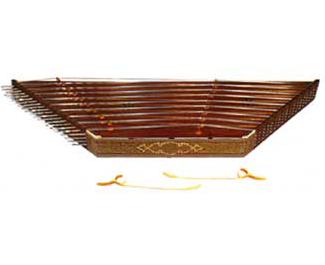
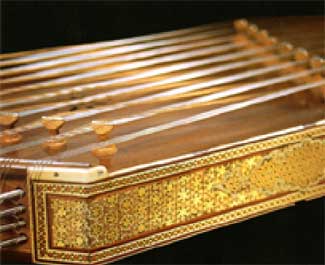
Photo provided by Hamamatsu Museum of Musical Instruments
Over the next 500 years, this type of musical instrument spread across the world. Ethnic derivations still to be found today include the santoor in India, yoochin in Mongolia, yangqin in China, yanggeum in Korea, khim in Thailand, cimbalom in Hungary, hackbrett in Tyrol regions of Germany and Switzerland, and hammered dulcimer in the UK, Ireland and the USA.
Originally, santur strings were made from sheep or goat intestine, but today, brass or copper and steel are used. Although some have theorized that silk may have been employed during the time of the Silk Road trade, this is questionable, as the tension must be high in order for the mallets to rebound correctly. There are typically 18 sets of quadruple strings, for a total of 72 strings. The term santur is said to be derived from a Sanskrit word meaning "one hundred strings." Although that's more than we find today, research shows that earlier santur had 24 or even 30 pairs of strings.
Unison strings were instrumental in the development of the harpsichord, keyboard precursor to the piano. Here, though, its role was primarily to increase volume. Around the year 1700, Bartolomeo Cristofori di Francesco is credited with creation of the first piano. Called gravicembalo col piano e forte, it responded to the player's touch to play from soft (piano) to loud (forte), an improvement over the harpsichord, which plays at a constant volume. Like the harpsichord, though, the fortepiano or pianoforte also utilized multiple unison strings right from the start. The instrument as we know it today, with triple strings for the majority of notes, resulted from demand for expanded tonal range and volume, and dates from around the year 1800.
Although it is said that increased volume was the original purpose of adopting multiple strings, acoustic engineering studies have revealed that this configuration has profound effects on tonal coloration and playing characteristics. In conjunction with the soundboard, unison strings provide a stronger attack, quicker decay and a richer and more sustained resonance than that of a single string. Interestingly, if the unison tuning is precisely the same, these characteristics may be lost. The tuning needs to be slightly off for optimal effect. This tends to occur naturally, as it's nearly impossible to tune unison strings with that level of precision. This was especially the case before the era of high-strength materials and tuning meters. Clearly, though, the early adopters of multiple stringing in pianos and other instruments were well aware of the relationship between unison strings and timbre.

